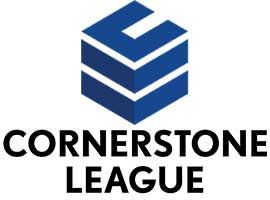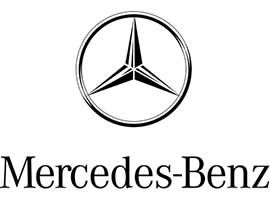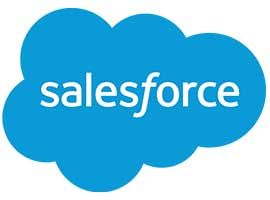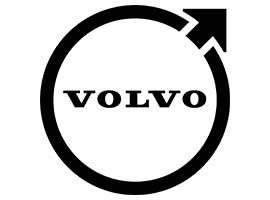Let's eavesdrop on a conversation between your employee and C.A.R.L., the Cohesive Artificial Response Leader.
Hey C.A.R.L., why am I not getting promoted? I’m showing up, doing my job...
If you feel overlooked for promotion, it might be helpful to assess whether you are actively participating in your own growth plan and seeking opportunities to contribute beyond your immediate responsibilities.
So what am I supposed to do? Wait for my manager to finally notice me?
The book suggests that instead of waiting for your manager to notice you, you should take proactive steps to stand out and make a positive impact.
Over 56% of today’s workforce has become increasingly dissatisfied with the lack of training and development offered by their employer. Many of these same people are being passed over for promotion with no plan for success.
Remote and hybrid work are the new normal. Recent studies indicate that UK workers, for instance, average 1.8 remote workdays per week, surpassing the global average of 1.3 days. In the U.S., similar patterns emerge, with a significant portion of the workforce embracing flexible work arrangements. (The Guardian)
However, this shift brings its own set of challenges. A survey revealed that 25% of remote employees experience daily loneliness, compared to 16% of fully onsite employees. Moreover, remote workers are 98% more likely to report severe work loneliness than their in-office counterparts, according to Ringover's 2024 Loneliness at Work survey.
So, how can leaders ensure their remote and hybrid teams remain cohesive and engaged?
Make it a strategy
Oftentimes, leaders fail to respond to the periphery until it is in plain sight. For the past several decades, it would be hard to consider “culture” being a sidelined conversation. YET, the attention to changing the toxicity of the work culture has only come into its own in the last several years.
Have you ever seen a leader react to one person’s mistake by rewriting the entire rulebook?
Suddenly everyone has to follow a new process, add an extra approval step, or jump through hoops that didn’t exist yesterday. The team gets frustrated, productivity slows, and resentment grows... not because the process was broken, but because one person didn’t hold up their end.
That’s the leadership equivalent of staring at the tip of an iceberg. What you see above the surface feels like the problem, but the real mass lies hidden below. When leaders only react to what’s visible, they miss the root cause and make everyone suffer for what is often a single behavioral issue.
Avoid creating new processes instead of dealing with underperforming behaviors.
Cohesive leaders know the difference between a process problem and a people problem, and they have the courage to address what’s really below the surface.
Recently, I had the privilege to speak at theAmerica's Credit UnionsHROD Conference on how to Retain Employees through Cohesion.
One of the key takeaways in addition to the ever popular Cohesion Wave was a quick review of theCohesion Culture™Talent Retention Model.
Do you offer flexible hours and locations?
Does your team understand their level of autonomy and initiative?
Are your managers making their individual team members feel included?
Have you readied your staff for growth, development, and advancement?
If you answered “no” to one or more of these questions then you aren’t meeting the organizational culture expectations of today’s workforce.
More than likely you may be struggling to keep that talent you spent time and money acquiring and training.
Toxicity in the workplace is like an invisible weight dragging down morale, productivity, and retention.
Many employees find themselves working in environments where toxic behaviors thrive, unsure of how to navigate or challenge them.
So, I askedC.A.R.L., the Cohesive Artificial Responder Leader,for insight on handling toxicity effectively.
Here’s what C.A.R.L. had to say:
"Handling toxicity in the workplace involves creating a work environment that fosters cohesion and removes the toxicity that can strangle performance and cause people to leave an organization. Here are some strategies based on the bookBecoming a Cohesive Leader:"
This is Blog Post #5 in myCohesion Culture™Talent Retention Model newsletter series. If you haven't already done so, click to read thefirst,second,third, andfourthin the series.
I hope you have enjoyed learning about theCohesion Culture™Talent Retention Model throughout this newsletter series. The model illustrates the elements required to foster a culture enriched with cohesion, where individuals feel a sense of inclusion (belonging), recognize their worth (meaningful work), and engage in mutual collaborations (commitment).
The Cohesion Culture™️ Talent Retention Model is perfectly suited for any corporate hallway, walkway, or gathering space.
(The art of building relationships so each other can fly.)
This is Blog Post #4 in myCohesion Culture™Talent Retention Model newsletter series. If you haven't already done so, click to read thefirst,second, andthirdin the series.
What does a paper airplane, two brothers, and a mom have to do with building relationship?
Let's dive into the realm of Relating in today's newsletter, where we'll explore its three primary components.
Promoting your Employee Value Proposition (EVP) is an effective strategy for attracting and part of the foundation for retaining employees regardless of the size of the business. Guest writer,Danielle Shroyer, founder ofEngage HR, a boutique Human Resources consulting firm, presents insight for small businesses to compete for talent against large corporations.
As Danielle provides excellent advice for small businesses to attract talent, she and I are aligned in how EVP and cohesion retains them. We know that you cannot simply offer an EVP without backing it up. AND, a cohesion-infused culture provides the foundation to sustain the impact gained through attracting employees with EVP.
Hi! This is Karmen Zabron and I’m the Founder and Chief People Officer at Area of Effect (AoE). As part of the Cohesion Culture™️ team, my role is HR Gamification Strategist.
At AoE, we believe that it’s people that make your company great, and we help HR and organizational leaders create environments where individuals can thrive.
Learning to think from inside and outside the organization
This is Blog Post #6 in my Cohesion CultureTalent Retention Model newsletter series. If you haven't already done so, click to read thefirst,second,third, fourth, and fifthin the series.
I hope you have enjoyed reading my Talent Retention Model Series. This comprehensive framework is designed to help organizations cultivate a cohesive culture that attracts, retains, and develops top talent. The model is built on the premise that a strong, unified organizational culture is key to employee satisfaction and long-term success.
Would you take a pay cut right now?
For most American workers, the answer is a firm “nope.” But dig a little deeper, and the story gets more interesting.
According toLinkedIn’s latestWorkforce Confidence Survey, more thanfour in 10 job seekerssay they would consider a salary reductionIFit meant better alignment with their values, more room to grow, or increased flexibility.
In other words,money isn’t everything.
Innovation is the shiny object every organizational leader wants to wave around.
But what happens when leaders confuse technological progress with cultural progress?
Case in point:AT&T’s CEO,John Stankey. His 2,500-word memo recently went viral, not for its vision of the future but for its conditions of belonging. The message to employees was clear:
- You’ll get tools, structure, and opportunity.
- But don’t expect loyalty, flexibility, or advancement without constant proof of value.
- And if that doesn’t work for you, maybe you’re in the wrong place.
This directive signals a bigger problem... some leaders are betting they can adopt artificial intelligence while ignoring the real intelligence that drives culture. The people.






